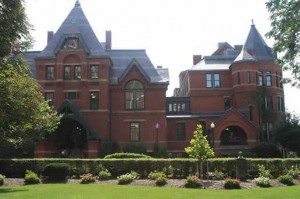January, 2012 archive
Even Colleges Are Budget Conscious 0
 From Boston University to California’s 3 million-student community college network, the American system of higher education is in turmoil. The economic crash is upending each step in the equation that families use to determine where students will spend four of their most formative and expensive years.
From Boston University to California’s 3 million-student community college network, the American system of higher education is in turmoil. The economic crash is upending each step in the equation that families use to determine where students will spend four of their most formative and expensive years.
Independent colleges that lack a national name or must-have majors are hardest hit. Many have found themselves deep in debt in an effort to remain competitive. They are becoming more conscious of a student’s ability to pay during the admissions process. (Despite what a representative may say at a college fair or when you visit a campus.) Now, as endowments tumble and bills mount, they’re struggling to attract cash-strapped families who are challenged with their own financial situations.
The spending binge by colleges and universities was part of the same trend that created the bubble in the rest of the economy, says Ronald Ehrenberg, an economics professor at Cornell University in Ithaca, New York, and author of Tuition Rising: Why College Costs So Much (Harvard University Press, 2000). Now we’re seeing it burst.
Professor Ehrenberg does not place enough focus, however, on the ever expanding reliance on federal loans and grants that are made available from federal tax payers to fill financial need packages. This includes the expanding use of debt crippling Plus Loans. Instead, he writes more about the escalation in costs because of increased spending (borrowing) to enhance student amenities and other unnecessary expansion of the infrastructure. That is true, but one only needs to look at an academically strong liberal arts college in Pennsylvania to see how much money can be saved when a college does not depend on government subsidies. (Less than five accredited colleges are truly independent.) 
Grove City College does not participate in the federal loan or grant program. That is a big reason why the full cost of attendance there in 2014/15 is less than $26,000! It is not because they pay their professors less, have students sleeping on cots in bunk houses or do not offer financial aid; it is because they do NOT use federal financial aid. As I hope you know, there is an enormous mismanagement of money in most government programs. That is a characteristic of a multi-layered bureaucracy; it is often replete with redundancies and waste. For instance, in order to meet the eligibility requirements to use Stafford, Perkins, Plus loans and Pell and SEOG grants, colleges have huge administrative expenses that have nothing to do with educating your son or daughter.
All the more reason to approach the college planning process realistically. If you are just beginning the process you should know that smart college planning begins with a free consultation. During that time you will learn what steps you can take on your own to avoid the pitfalls of picking the college that is in financial trouble and cutting back on programs and professors. Clearly, these will have a negative effect on the time and money spent pursuing a degree in the appropriate major.
Standard & Poor’s predicts bankruptcies will rise from the typical one or two schools that fold each year. Small colleges with no reputation could go out of business, says Sandy Baum, a senior policy analyst at the College Board, They are very tuition-driven, so if they cannot get tuition revenues, they will be in really bad shape. In addition, Richard Kneedler, a former president of Franklin & Marshall College, a Lancaster, Pennsylvania-based college founded in 1787 with financial support from Benjamin Franklin, says many small schools face this predicament. Therefore, buyers beware.
